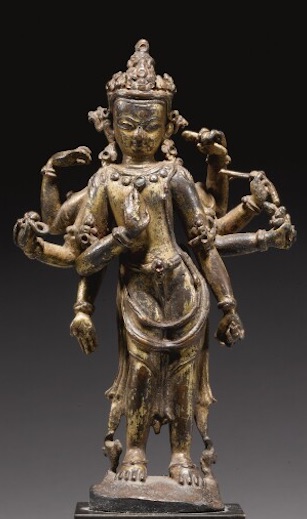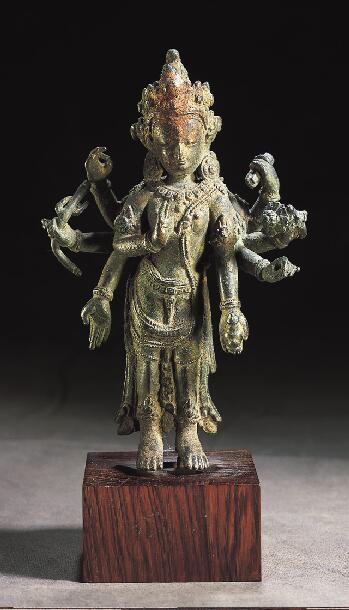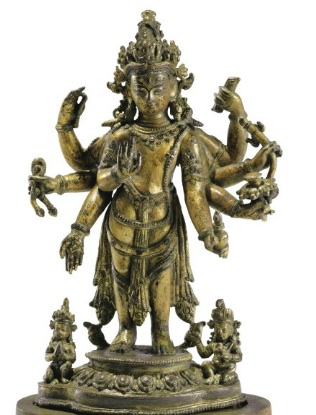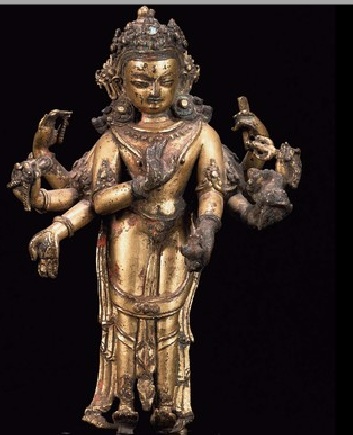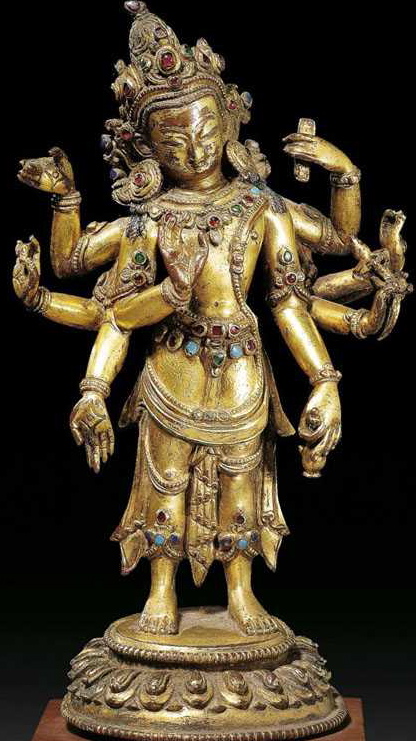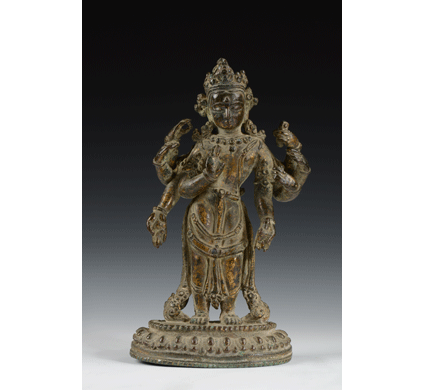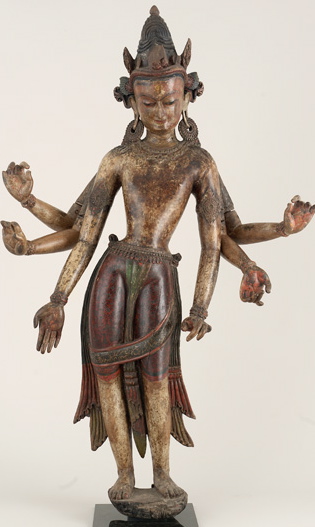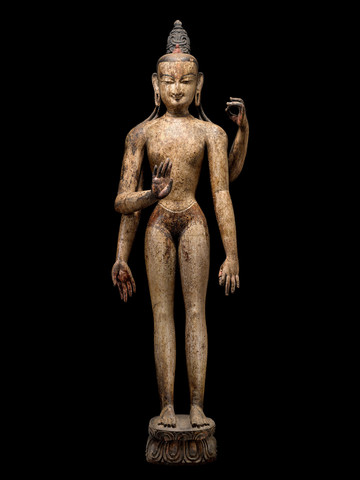Labelled ‘1100-1199, Nepal, Avalokiteshvara – Amoghapasha’, (gilt copper or copper alloy18th), private collection, photo on HAR
In his eight-arm form, Amoghapasha always has a tridandi (trident made of lotus stalks) in one of his left hands, and if another left hand holds a ritual water pot, as above, then the lower right hand makes the gesture of supreme generosity, the main one makes the fear-allaying gesture, the remaining right hands hold a rosary and a noose. The remaining left hands hold a manuscript and a lotus stalk or bud respectively. In the main page devoted to this bodhisattva on HAR , a distinction is made between Amoghapasha and Lokeshvara/Avalokiteshvara, yet the heading for this sculpture mentions both names, which is confusing. Whether or not Amoghapasha is a form of Lokeshvara, he certainly has a different iconography, and always holds a noose, which is his main attribute and distinguishes his six-arm form from the six-arm form of Avalokiteshvara, for instance. His most common forms have one head and six or eight arms but he may have twelve, and even up to twenty according to Alice Getty.
17th century, Nepal, Amogapasa, copper alloy with remains of gilding, 15 cm, private collection, Asian Art A142AS lot 126,22nd September 2007, Koller
17th-18th century, Nepal, Amoghapasha, gilt bronze, 22 cm, private collection, European and Asian Art lot 280, 6th June 2023, Loeckx.
Undated, Nepal, Amoghapasha, stone, 65 cm, photo by Sunil Dongol, 2014, at Svayambhu (Nepal).
Undated, Nepal, Amoghapasha, stone, 55 cm, photo by Sunil Dongol, 2015, Chhusya Bahal, Kathmandu (Nepal).
18th century, Nepal, Amoghapasha, copper alloy, 17,5 cm, private collection, Asian Art Auction W249AS lot 1007, 6th June 2016, Koller
Late works don’t always follow the standard iconography, as is the case with this eight-arm Amoghapasha whose tridandi is in one of his right hands (which normally corresponds to the six-arm form).
















